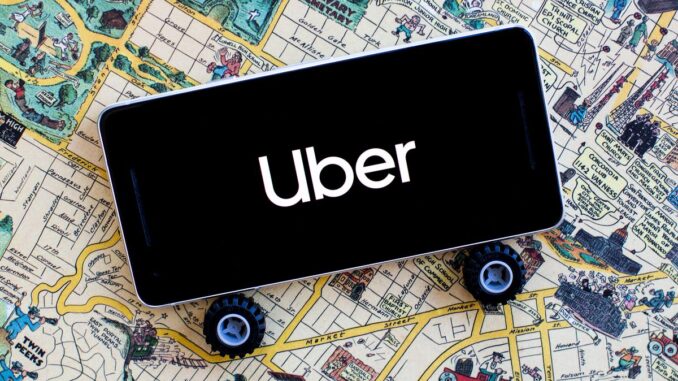
Guanlun Li 490054758
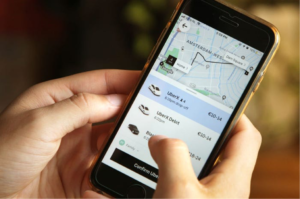
Introduce
With the development of the Internet economy, more and more platforms choose to cater to the so-called “lazy economy”. Taxis are replaced by various taxi-hailing software. The car used to be waiting for the car, now the car is waiting for me, which saves time. “This is the inner portrayal of every revenue user, but by increasing ordinary people’s sideline income, it squeezes the impact of income on professional drivers or shakes tradition. With the market position of the transportation industry, more and more people use platforms as platforms. An indispensable tool for operation, and the resulting socio-economic problems have forced the government to intervene in supervision.
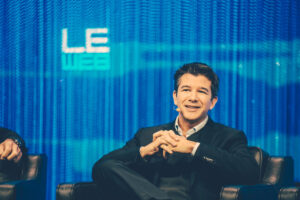
Birth and development
In June 2010, Travis Kalanick and Garrett Camp officially launched the UBER platform[11]. The previous circle only existed in their friends, until they and a Melbourne car rental company contractor used the iPhone base fee as a jumper instead of The original electric meter. This disruptive design allows them to formally enter the Internet economy market. As a platform for the sharing economy, Uber includes high-end vehicles, low-price, and other transportation services, providing customers with prices comparable to training activities, and understanding cars and other conditions through map positioning. Save a lot of time. And the take-out catering services provided to provide customers with a full range of life services,
Profit model under the sharing economy
Platform commission:
Uber’s main revenue comes from the exclusiveness of each order. The details are determined by the different models of the vehicles, the number of kilometers, the weather, and the credit rating of the driver on the platform. Basically 15%-33% [2] Suitable for drivers and passengers. , Uber acts as an intermediary, provides intermediary services, collects intermediary fees reasonably, and fills the huge market gap in demand for car services. With the development of the mobile Internet, supply and demand are reconstructed with low-cost links to achieve optimal allocation of resources. However, the profit from this model depends on the number of online drivers and users. Business models are constantly being replicated in different regions and countries. It is the development concept of Uber to change according to national conditions and customer needs, such as credit cards in India. Cash payment is provided in regions that are not widely used. Overall, the optimal use of bilateral economic cooperation is realized The “online auxiliary company” realizes the model by providing intermediary services.
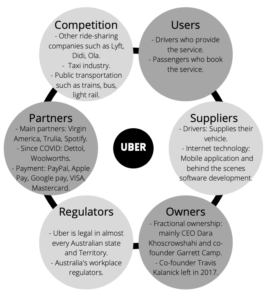
Uber Internet Ecological Map created by Jeanny Hen
Self-replication in the extended field:
Uber has a large customer base, and customers browse Uber’s platform software almost every day. This provides Uber with good traffic. At the same time, the exposure brought by following traffic gives Uber the opportunity to expand its field. In the context of the sharing economy, traffic dominates the consumption trend of the crowd, and Uber has chosen a self-replication model to make full use of the consumer psychology of customers. In April 2014, Uber launched the instant delivery service Uber Rush in Manhattan, August 2014 , Uber launched the moving service Uber Movers in Atlanta and Nashville. In April 2015, following Barcelona and Los Angeles, Uber announced the launch of Uber Eats delivery service in New York and Chicago [3]. The continuous improvement of the consumer population has led to the sharing of big data, and Uber has always acted as an intermediary to collect platform fees, constantly copying itself to achieve the integration and reuse of resources, and has mastered a huge information network to serve customers. In summary, Uber has mastered The information flow of the market, in other words, this is the “wealth code” of the Internet economy.
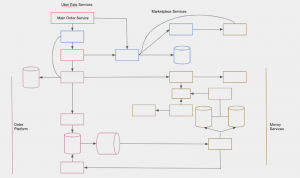
Constraints and policies:
With the rise of many online ride-hailing platforms such as Uber in the market, more and more ride-hailing drivers have become an important part of urban transportation. However, due to the lack of traditional taxi operating licenses, the lack of critical documents and a large number of negatives The emergence of the news Uber has been judged to operate illegally in many parts of the world, and is subject to varying degrees of government supervision. It is difficult to balance the interests of the traditional taxi industry and the online car-hailing industry, which has become a thorny issue for the government. However, for government supervision, Uber adopts clear entry thresholds, discloses the driver’s personal information, records in the police station and other policies and adopts third-party treaties, and cooperates with leasing companies to reduce liability risks and circumvent government policies [4]. The involvement of the government is important in the context of the sharing economy. Macro-control has brought contradictions in the industry. For the taxi industry, the cake is divided into an inevitable reality, but more importantly, more and more people choose The use of loans to buy a car to serve as an online car-hailing driver has caused the shrinkage of the taxi industry and the loss of the traditional industry that is the mainstay of the city.

The pressure of market competition:
At present, there are a large number of online car-hailing companies and the competition is fierce. As a leading company, Uber’s overseas market expansion is the key to development. However, different countries obviously have different national conditions and attitudes towards online car-hailing, so the business model to enter the market is Because of this change. In the Chinese market, the concept of “low price sharing” is deeply ingrained. Since the launch of platforms such as DiDi, price wars have continued, and a large number of discounts and offers have made it difficult for customers to choose. Since Uber first came to the Chinese market in 2013, Uber chose To avoid the competition of price wars, to “high-end travel” and to meet the high-end people and enterprises as the goal of advertising and recruiting in first-tier cities. The models are also mainly high-end models such as Mercedes-Benz and BMW. A lot of bad reviews, poor service, and a poor environment to win a place. Try to build a brand image with thoughtful service. In overseas markets, Uber’s competitive pressure has been reduced a lot. Flexible and diverse business concepts have shown advantages in most countries and almost monopolized foreign markets. For example, in Australia’s main city, Sydney, Uber’s services are well received. Local acceptance, taxi, takeaway, etc. For taxi-hailing, Uber provides different services according to the needs of different groups of people, including middle, high and low end groups. Uber pool provides low-cost carpooling, Uber x provides private car service, and Uber Black provides private car service. Compared with traditional taxis, it has become the best choice for travel. This success of Uber benefited from the entry of private cars and the price of civilians, which greatly expanded the market scope of drivers and users. In theory, it became a market with unlimited supply and unlimited demand, and made full use of fragmentation. Time to create revenue.
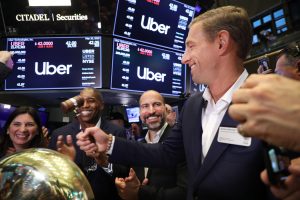
conclusion
To sum up, the rise of Uber is not accidental. Under the background of the sharing economy, Uber has become a pioneer who knows how to use the sharing model to create revenue. Through the integration and reuse of information is the fundamental concept, it has created a bilateral relationship. The type of cooperation model that acts as an intermediary to collect intermediary fees reasonably is due to the interpretation of Internet information. In international competition, the diversity of changes makes it possible to gain a foothold in the native platforms of other countries, and have expectations for technological breakthroughs and understanding of people from different countries. In government control, how to avoid the intensification of conflicts with traditional industries is the focus of future development.

Reference
1 “The Founders of Uber: From Failure to Success”, Sohu Technology, August 1, 2013, see http://it.sohu.com/20130801/n383089368.shtml
2 “Uber Economics: Create or Kill?” Original text from The Atlantic, compiled by Tiger Sniff, January 25, 2015, available at http://www.huxiu.com/article/107103/1.html
3″What kind of model is the Uber Empire that has risen wildly?” Huxiu.com, May 24, 2015, see http://www.huxiu.com/article/115907/1.html?odby=dateline
4 “What are Uber’s changes in five years”, interface, June 9, 2015, see http://news.sina.com.cn/w/2015-06-09/001131927361.shtml.
5 “The scale of the global sharing economy market is expected to increase to US$335 billion by 2025”, Google, June 16, 2015, see http://www.aiweibang.com/yuedu/31959215.htm